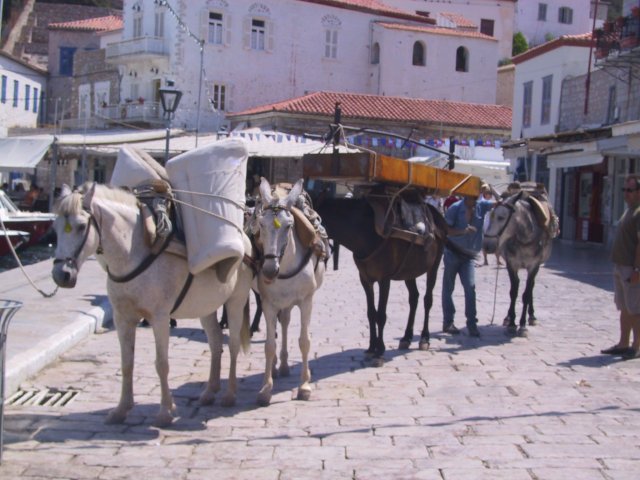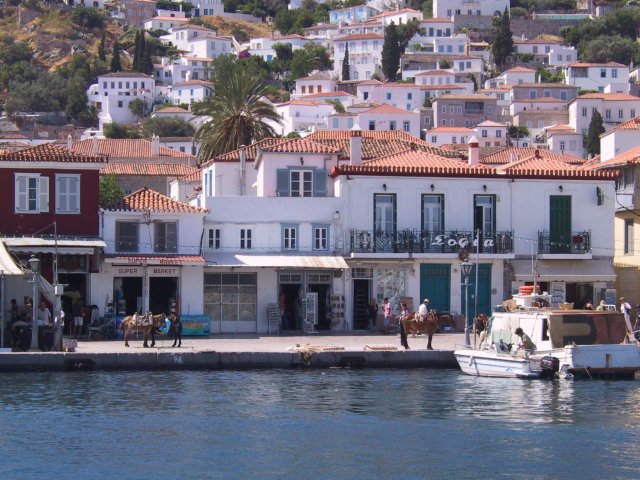Hydra, Greece
 Hydra department of transport
Hydra has been described as the Saronic Gulf island with the most style. The gracious white and pastel stone mansions of Hydra Town are stacked up the rocky hillsides that surround the fine natural harbour. Film-makers were the first foreigners to be seduced by the beauty of Hydra. They began arriving in the 1950s when the island was used as a location for the film Boy on a Dolphin, among others. The artists and writers moved in next, followed by the celebrities, and nowadays it seems the whole world is welcomed ashore.
Hydra department of transport
Hydra has been described as the Saronic Gulf island with the most style. The gracious white and pastel stone mansions of Hydra Town are stacked up the rocky hillsides that surround the fine natural harbour. Film-makers were the first foreigners to be seduced by the beauty of Hydra. They began arriving in the 1950s when the island was used as a location for the film Boy on a Dolphin, among others. The artists and writers moved in next, followed by the celebrities, and nowadays it seems the whole world is welcomed ashore.
If you've been in Greece for some time you may fall in love with Hydra for one reason alone - the absence of kamikaze motorcyclists. Hydra has no motorised transport except for sanitation and construction vehicles. Donkeys and horses (hundreds of them) are the only means of transport.
 Hydra waterfront
History - Like many of the Greek islands, Hydra was ignored by the Turks, so many Greeks from the Peleponese settled on the island to escape Ottoman suppression and taxes. The population was further boosted by an influx of Albanians. Agriculture was impossible, so these new settlers began building boats. By the 19th century, the island had become a great maritime power. The canny Hydriots made a fortune by running the British blockade of French ports during the Nape Iconic Wars. The wealthy shipping merchants built most of the town's grand old arhontika. from the considerable profits. It became a fashionable resort for Greek socialites, and lavish balls were a regular feature.
Hydra waterfront
History - Like many of the Greek islands, Hydra was ignored by the Turks, so many Greeks from the Peleponese settled on the island to escape Ottoman suppression and taxes. The population was further boosted by an influx of Albanians. Agriculture was impossible, so these new settlers began building boats. By the 19th century, the island had become a great maritime power. The canny Hydriots made a fortune by running the British blockade of French ports during the Nape Iconic Wars. The wealthy shipping merchants built most of the town's grand old arhontika. from the considerable profits. It became a fashionable resort for Greek socialites, and lavish balls were a regular feature.
Hydra made a major contribution to the War of Independence. Without the 130 ships supplied by the island, the Greeks wouldn’t have had much of a fleet with which to blockade the Turks. It also supplied leadership the form of Georgios Koundouriotis who was president of the emerging Greek